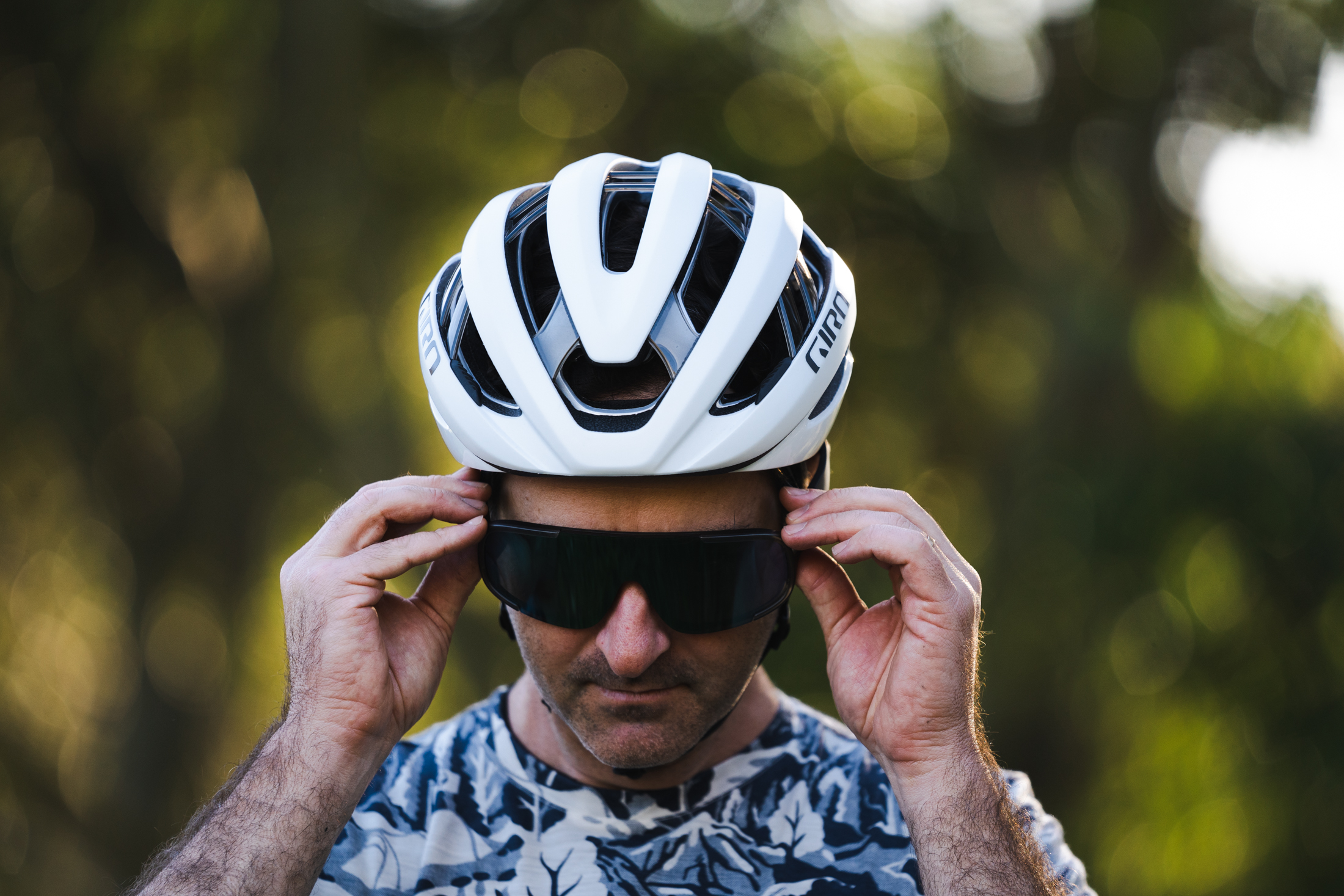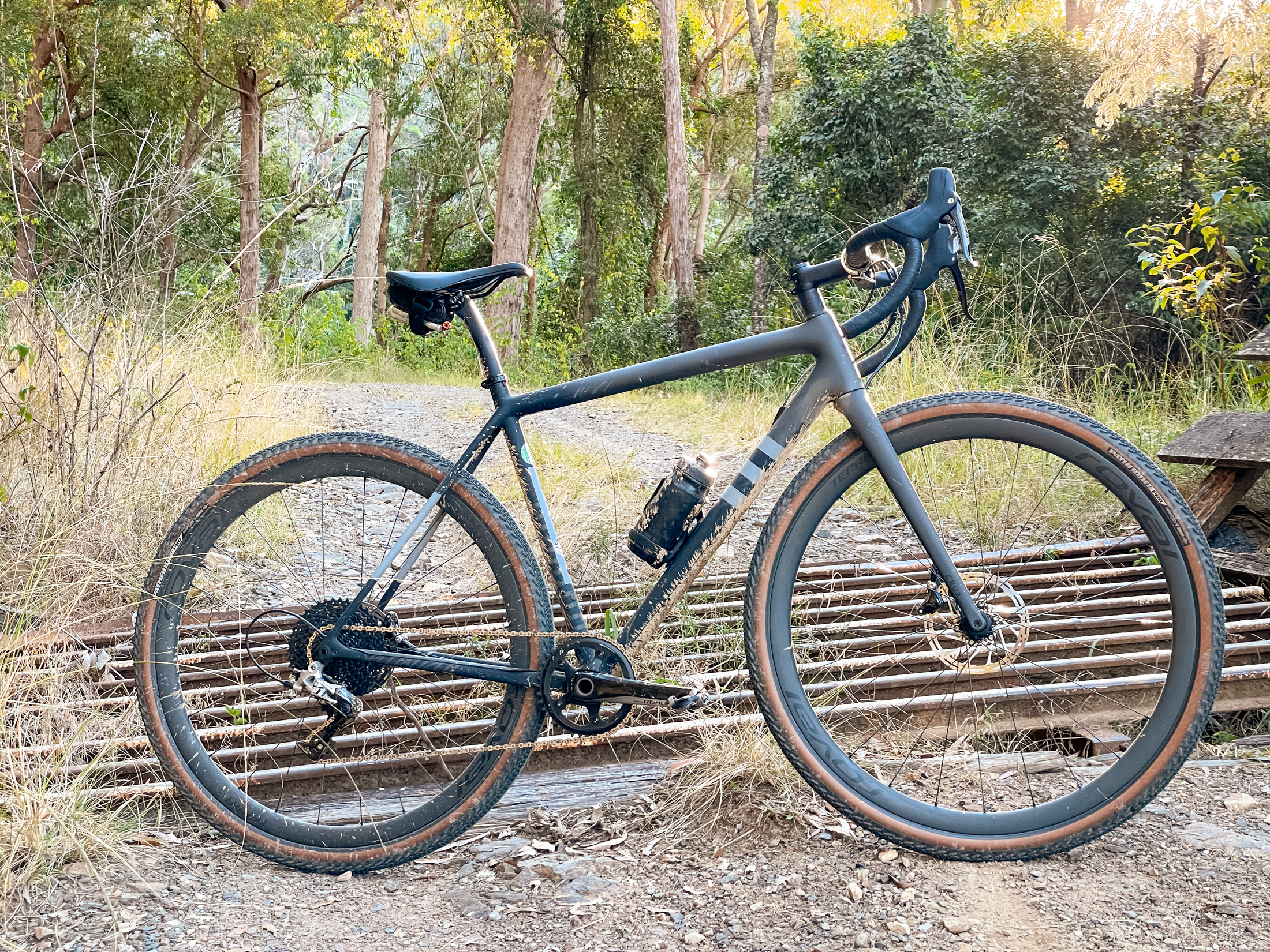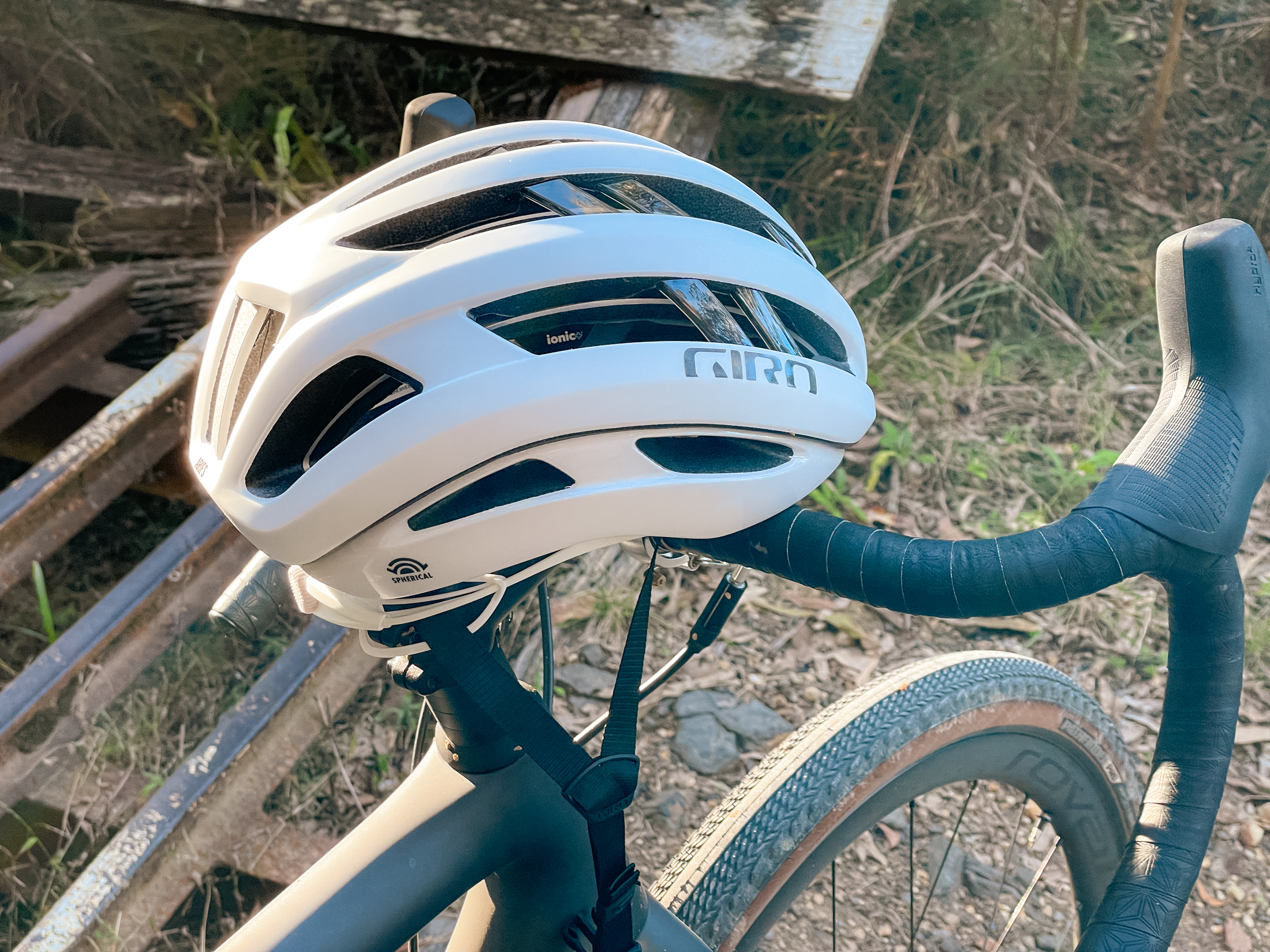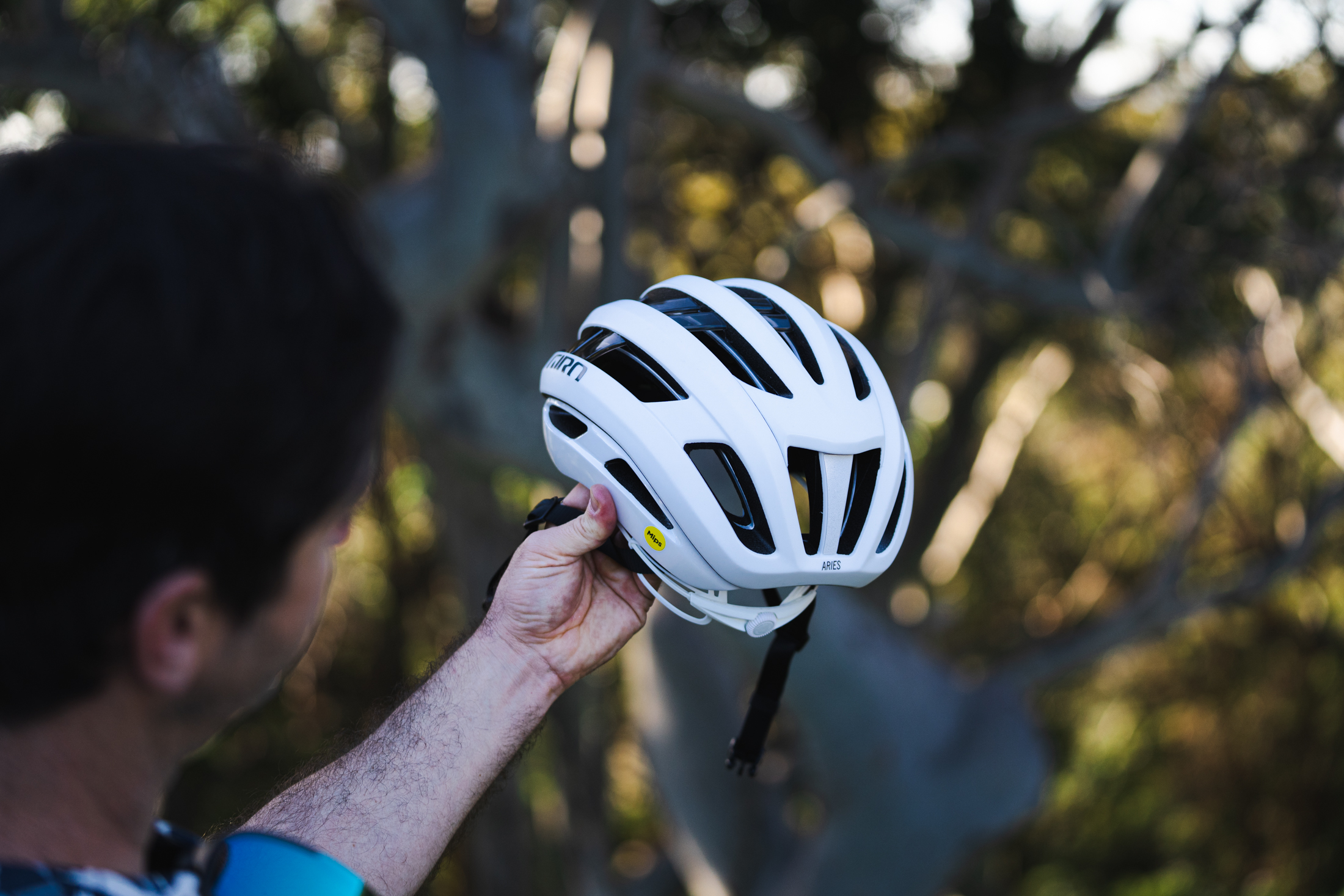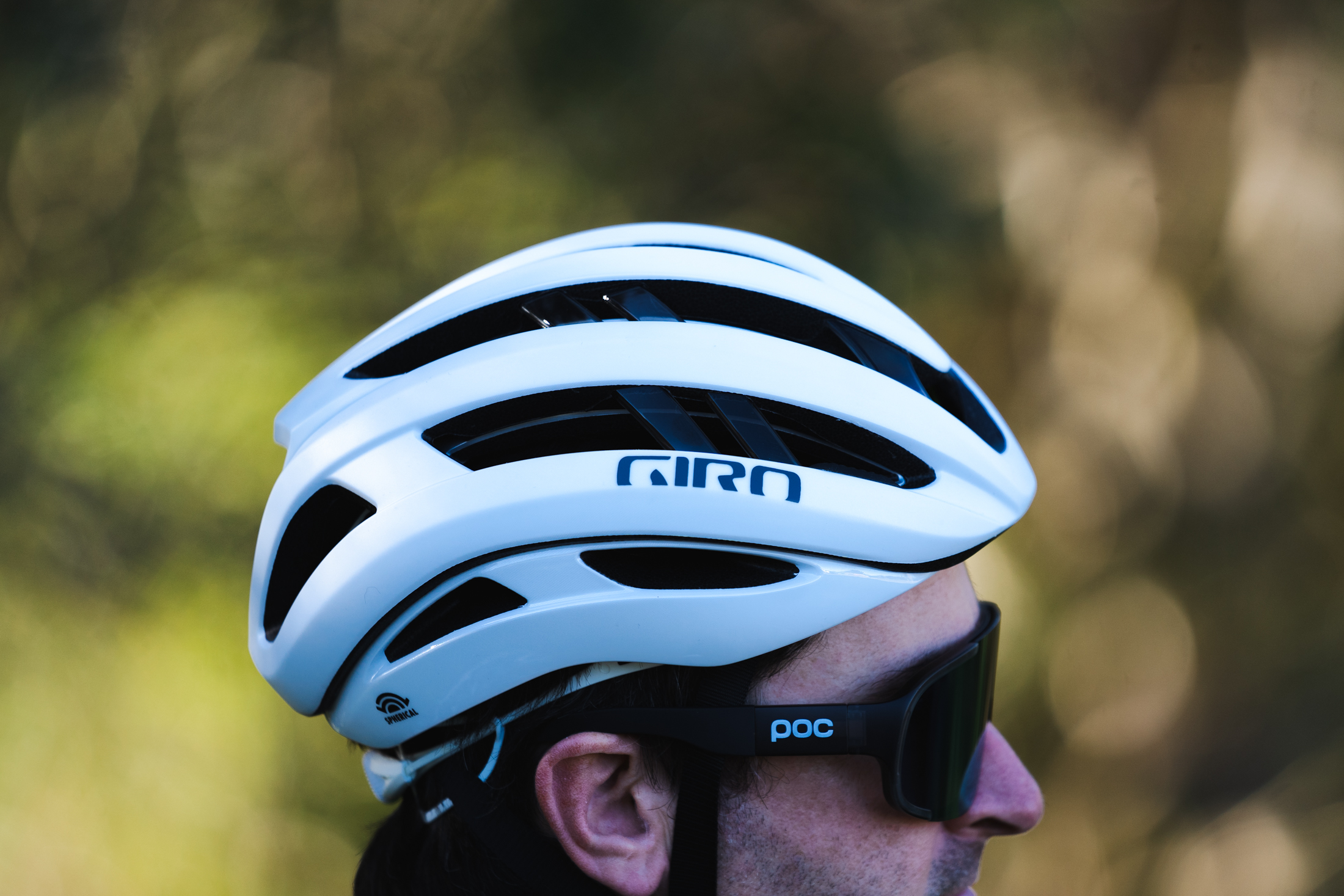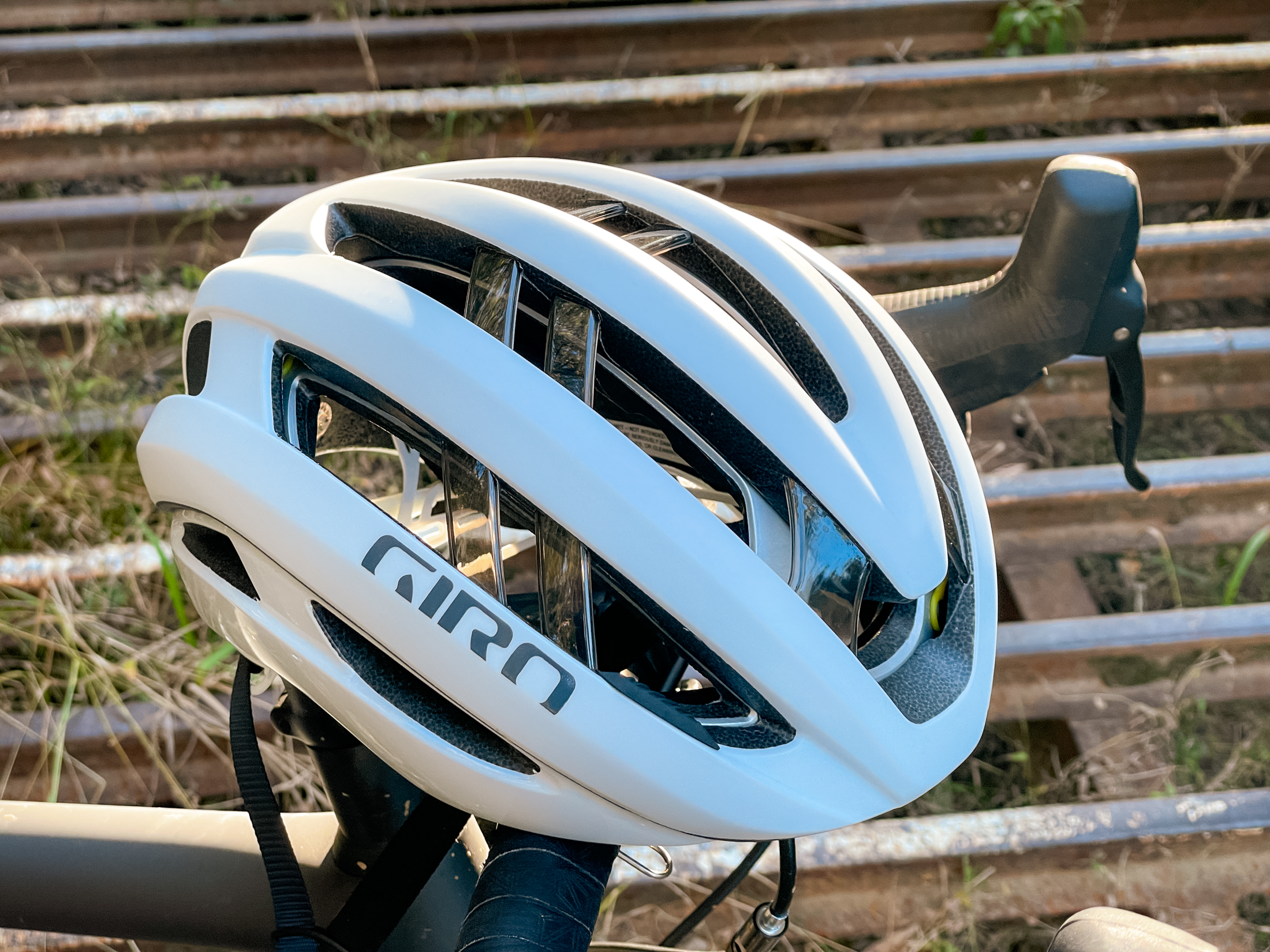The Giro Aries Spherical helmet presents a sleek and modern design. Its visor-less structure is mainly geared towards the cross-country, race, gravel, and road segments. Notably, the term ‘aero’ is even included in the product description, which may matter to some. While aesthetics are often a secondary concern for safety gear, this helmet combines form and function. However, a pleasing appearance is just one aspect to consider. The accurate measure of the helmet’s quality lies in its performance, comfort, and safety features, which we will explore in detail.
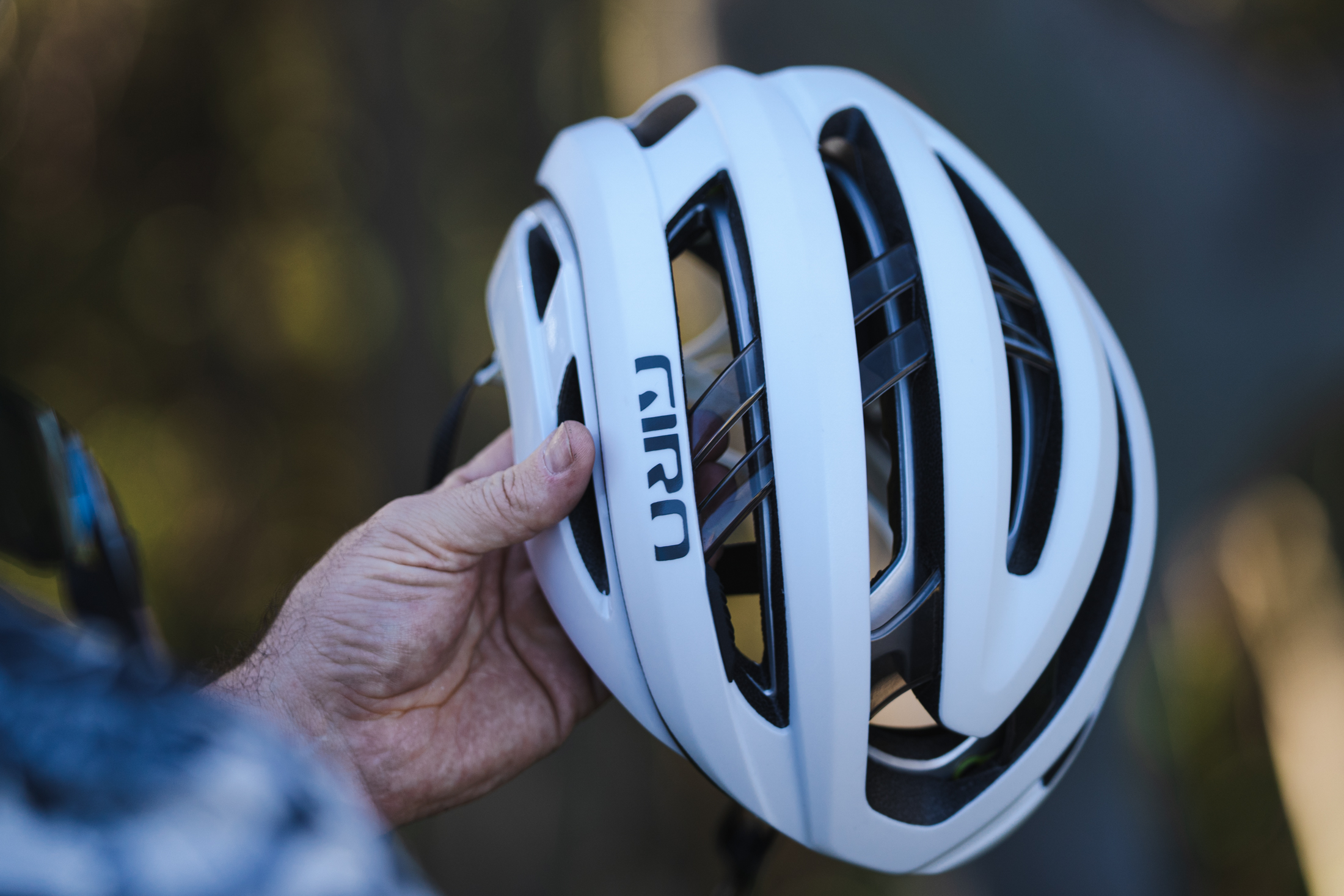

Fit and Comfort
Slipping on the Aries Spherical, you’ll first notice the cosseting fit. It’s like the helmet gives your head a gentle hug, but not in a clingy way. The adjustable straps and dial at the back make finding that ‘just right’ fit easy. There is also a nifty sunglasses dock; little rubberised strips inside the vents help keep glasses safe when stashing them on the helmet.
Weight and Build
This helmet is light, just 250g—almost delicately so, so be careful when it’s not safely on your head; squash it in the car or underneath luggage. It’s easy to forget you’re even wearing it, which is pretty much the goal regarding helmets. Looking closely, you can see the translucent bridges running across the helmet. These shatter-resistant, translucent twin bridges are said to provide structural integrity.
Ventilation
The Aries Spherical doesn’t skimp on ventilation. Even on those sweltering summer rides, all the airflow helps keep your noggin cool; placing your hand behind the helmet when coasting along, you can feel the warmer air being drawn away from your head as the vents do their thing.
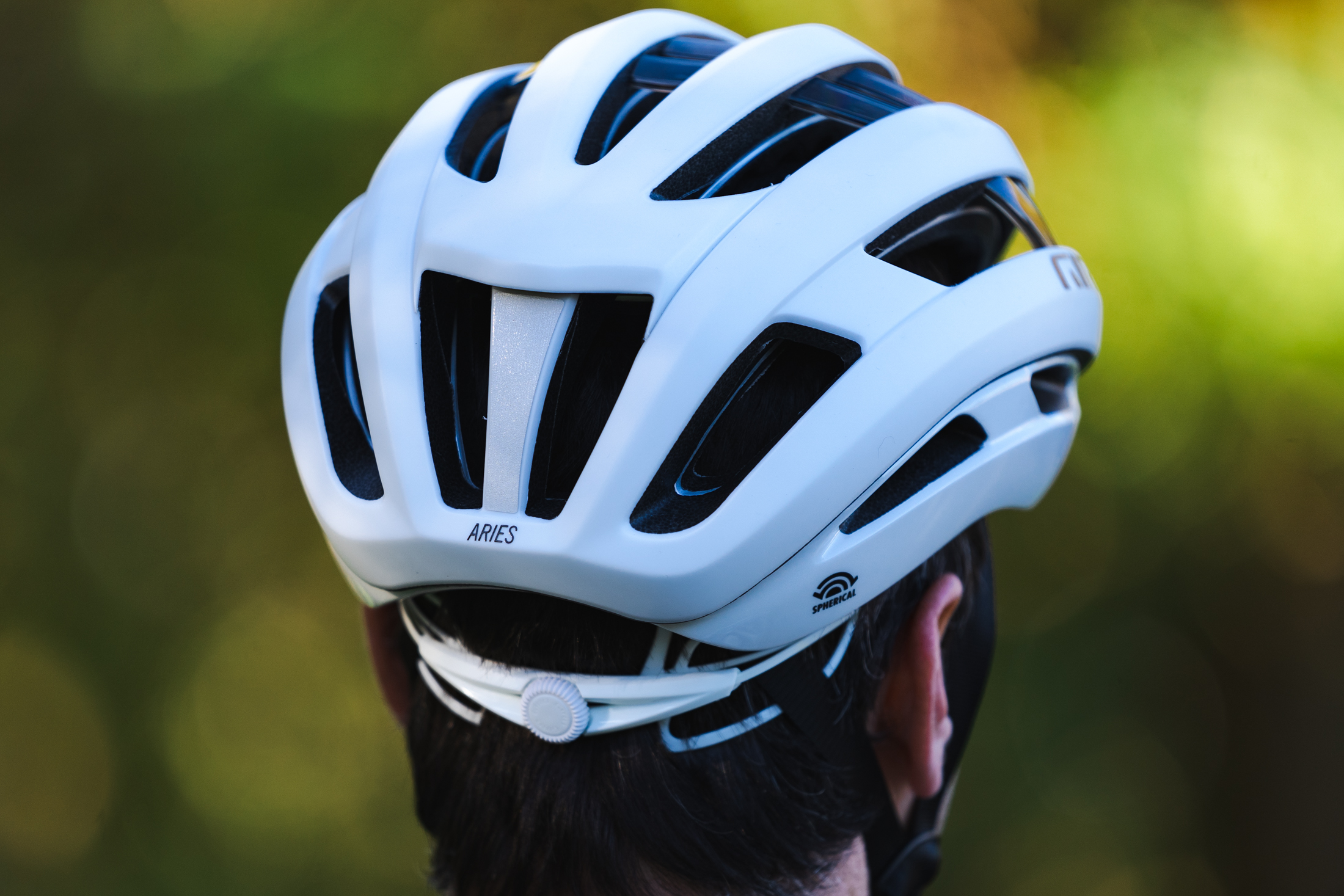
Spherical Technology
One of the standout features is its Spherical Technology, developed in partnership with MIPS. This tech divides the helmet into two layers—an outer shell and an inner liner—connected by an elastic interface like a ball and socket. In the event of an angled impact, these layers can move independently, redistributing and diffusing rotational forces. Think of it as a built-in shock absorber for your head.
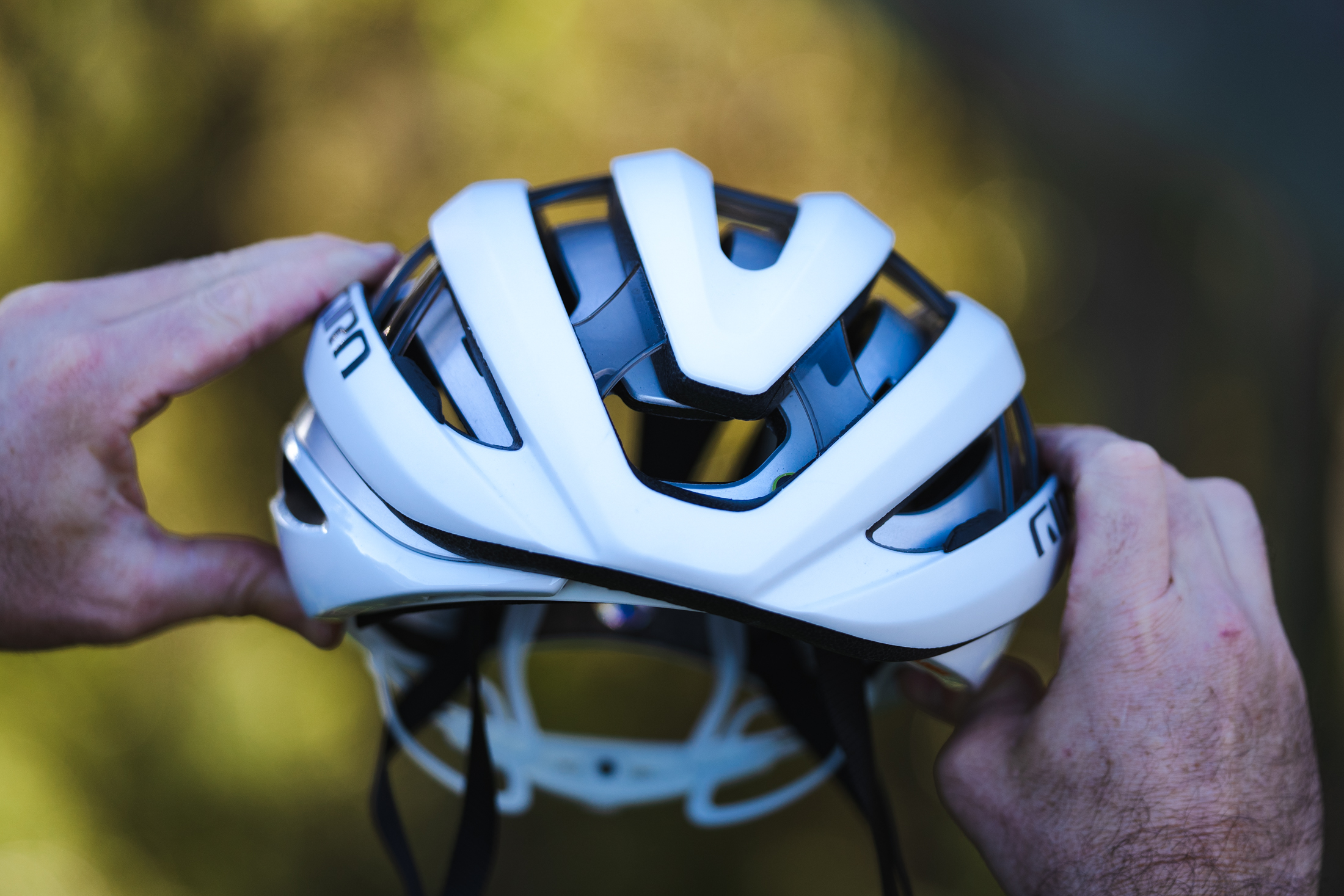
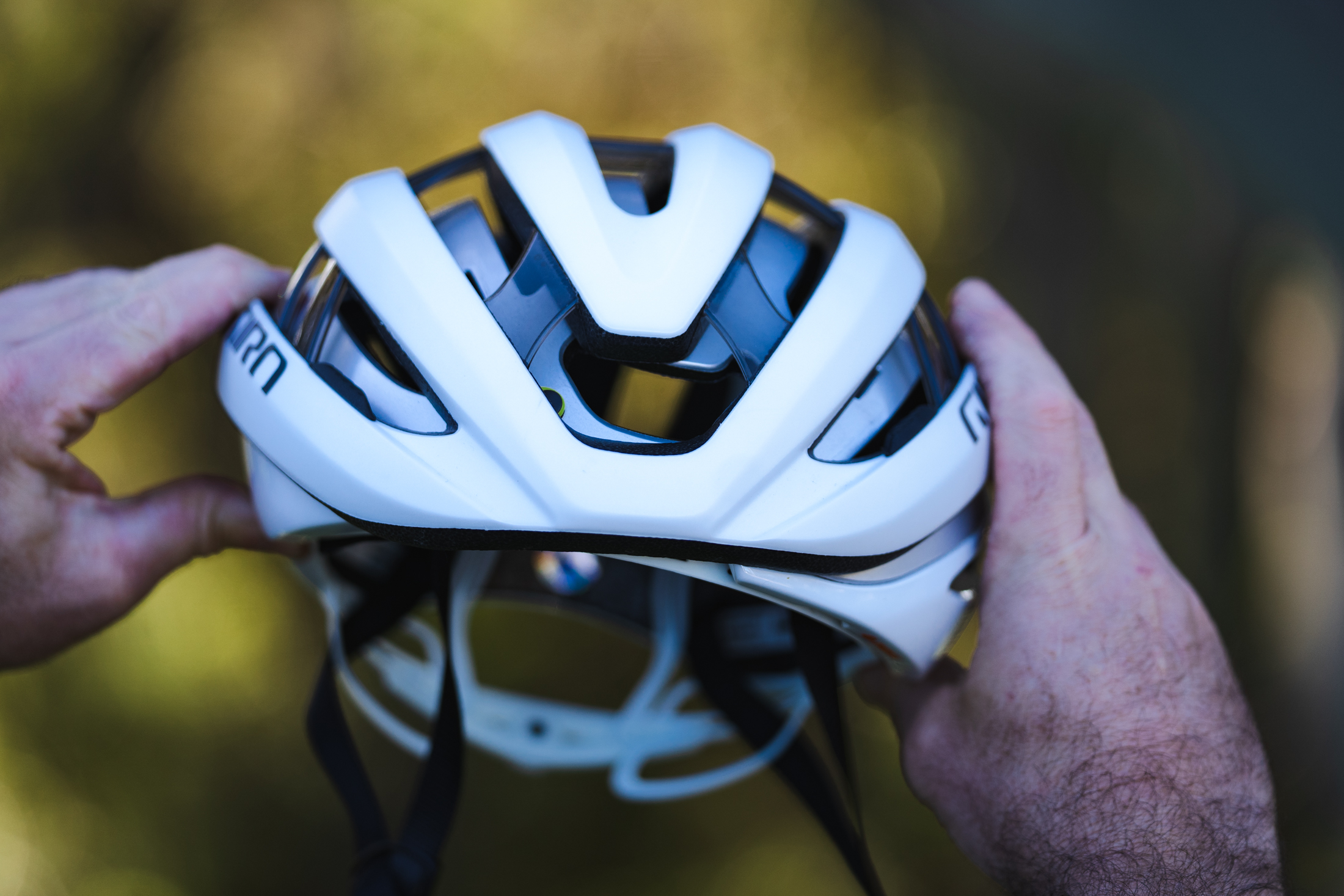
We’ve also had the chance to try out Spherical Technology in three other helmets: the Merit, the Manifest, and the full-face Insurgent. All of these helmets share a luxurious feel. In the case of the lightweight Aries, the two layers shake when you shake your head. You can feel the layers sliding across each other, which isn’t necessarily a bad thing. It just takes a little time to get used to.
Virginia Tech Rating and Weight
The Aries Spherical boasts a 5-star Virginia Tech rating, which is pretty much the gold standard when it comes to helmet safety. It weighs in at just 250 grams, making it one of the lightest helmets in its class.
The Verdict
I’ve worn a lot of helmets in my time, and the Aries Spherical stands out. I appreciate the close fit, the top-notch ventilation, and the cutting-edge safety technology. It’s a sensible choice; if you’re in the market for a lightweight helmet from a premium brand with decades of experience, this one should be on your shortlist.
